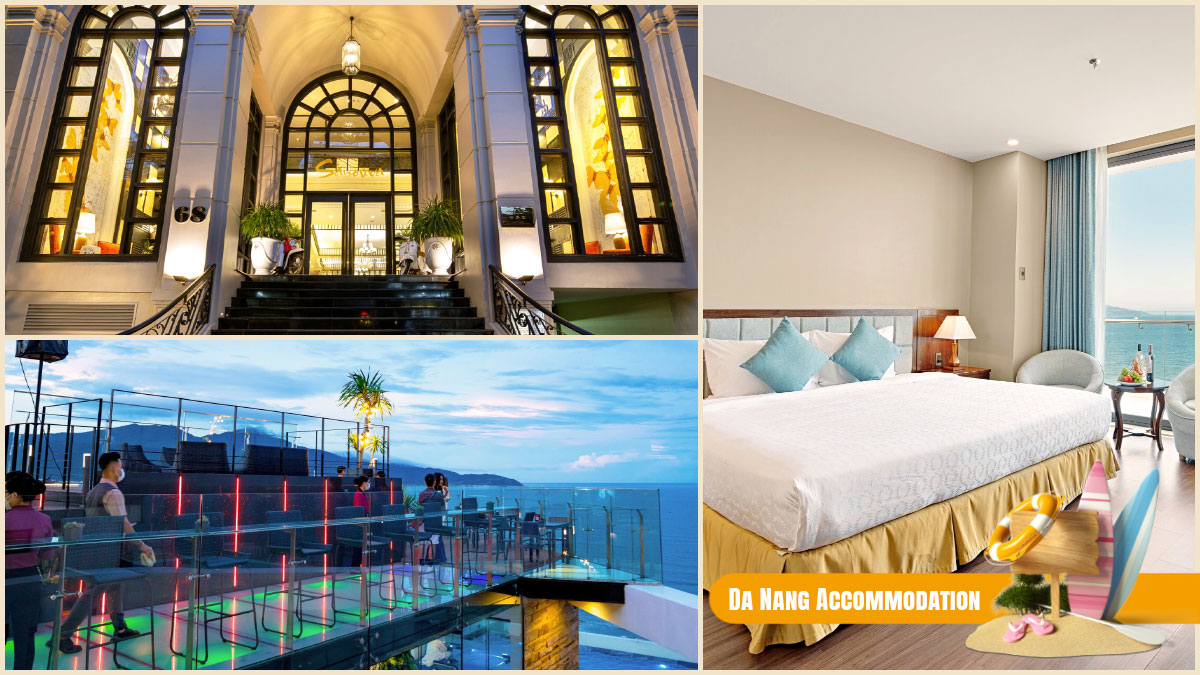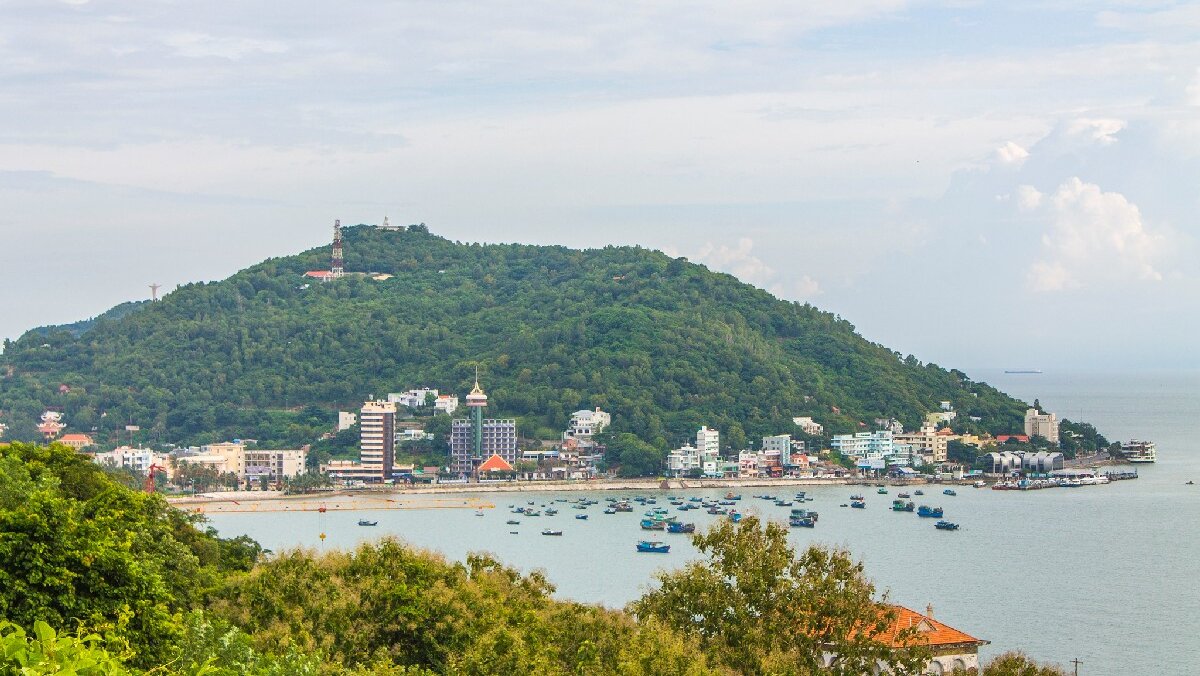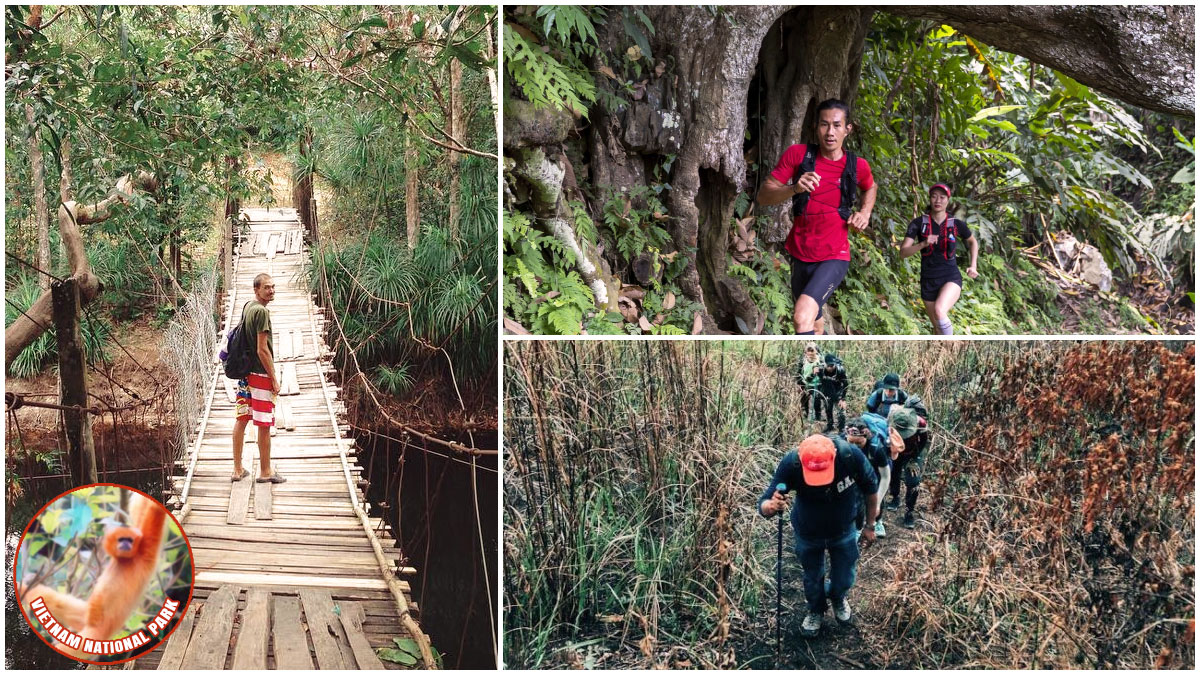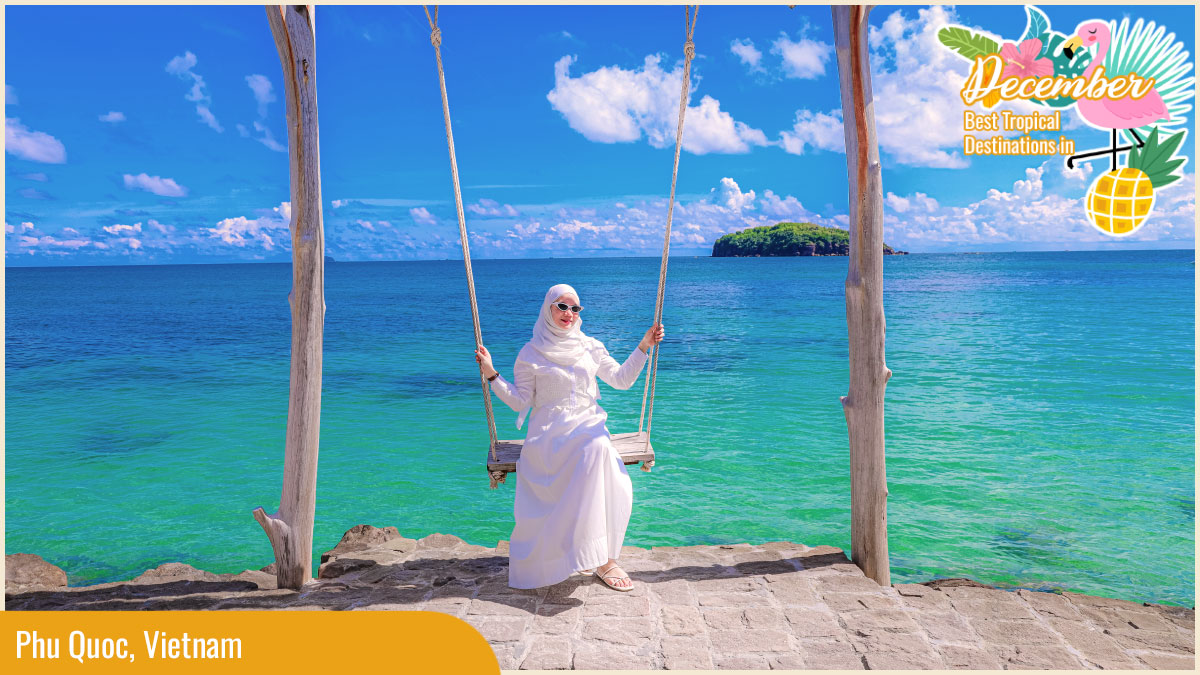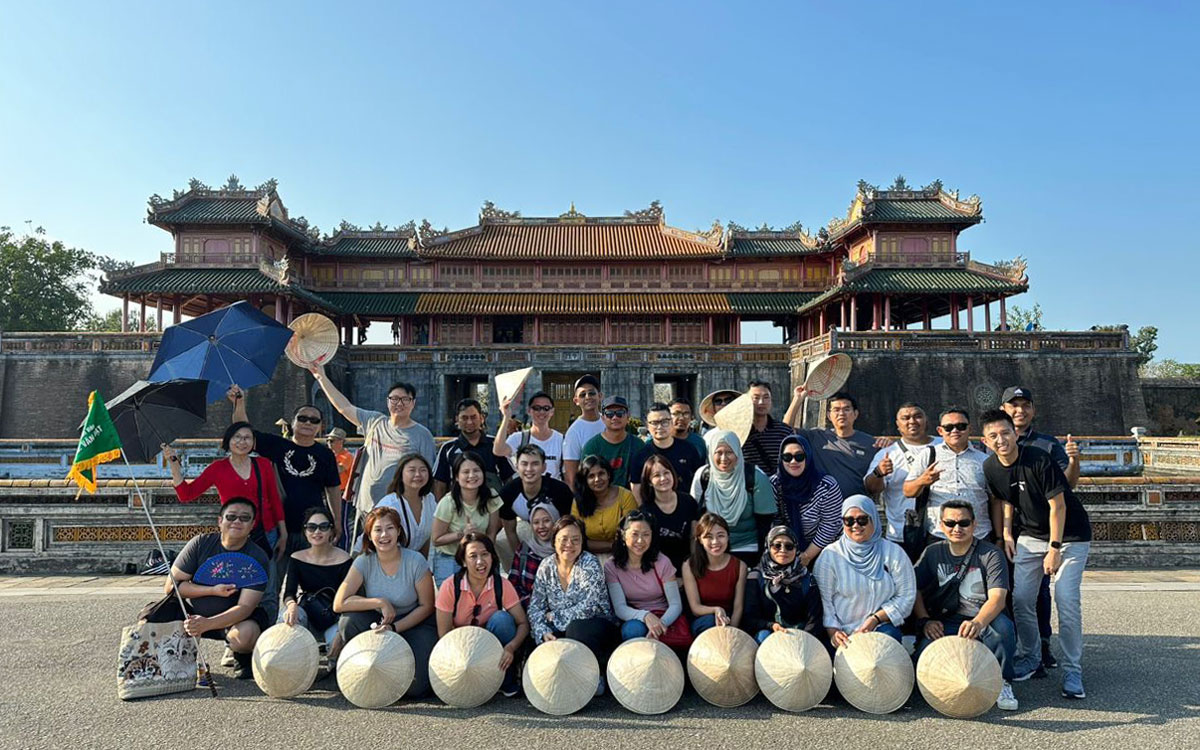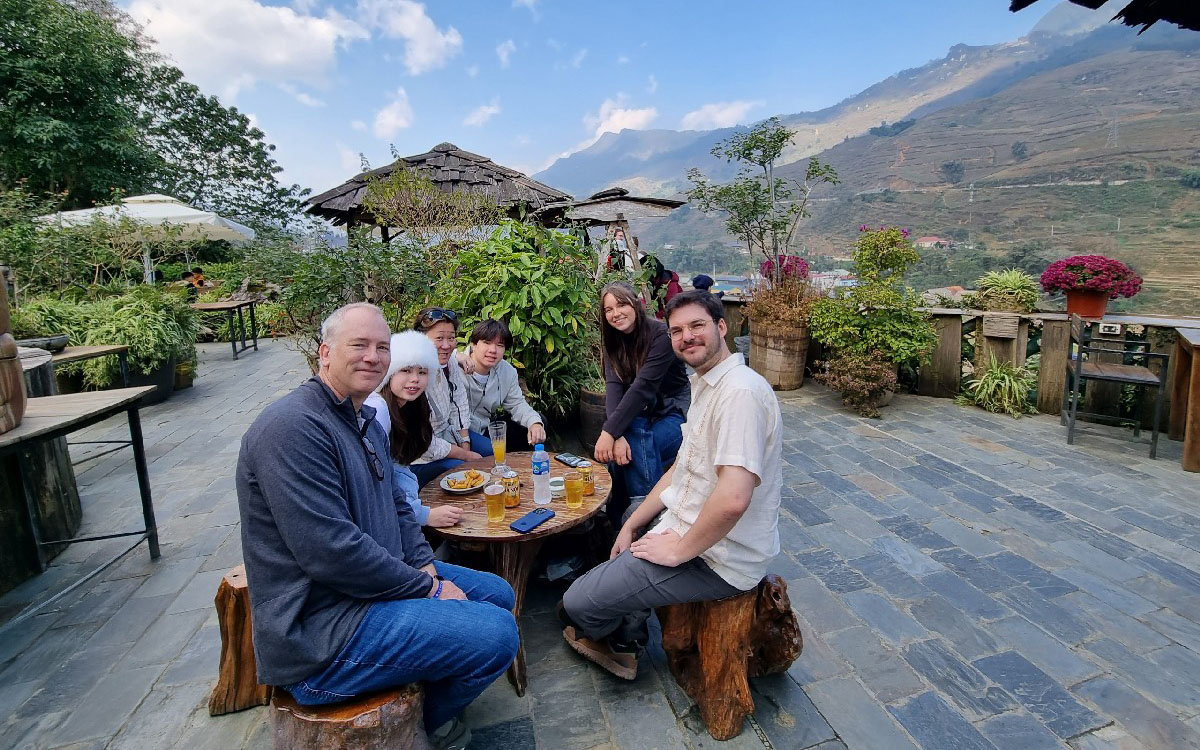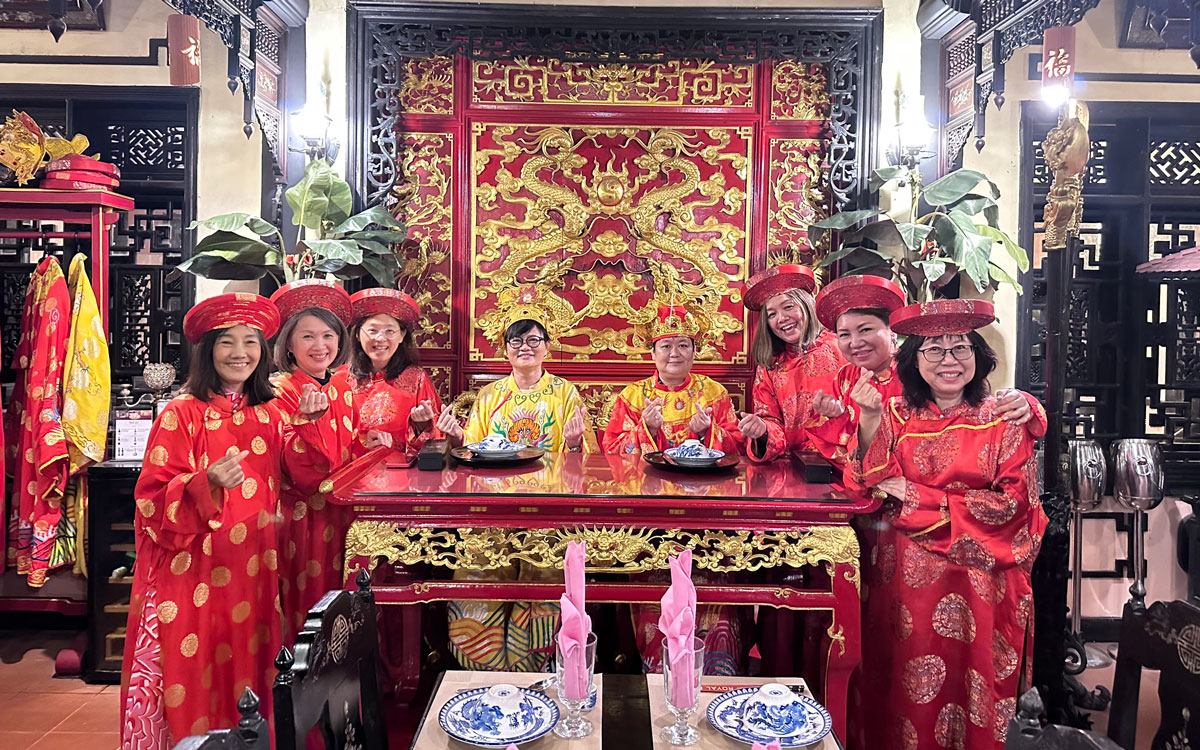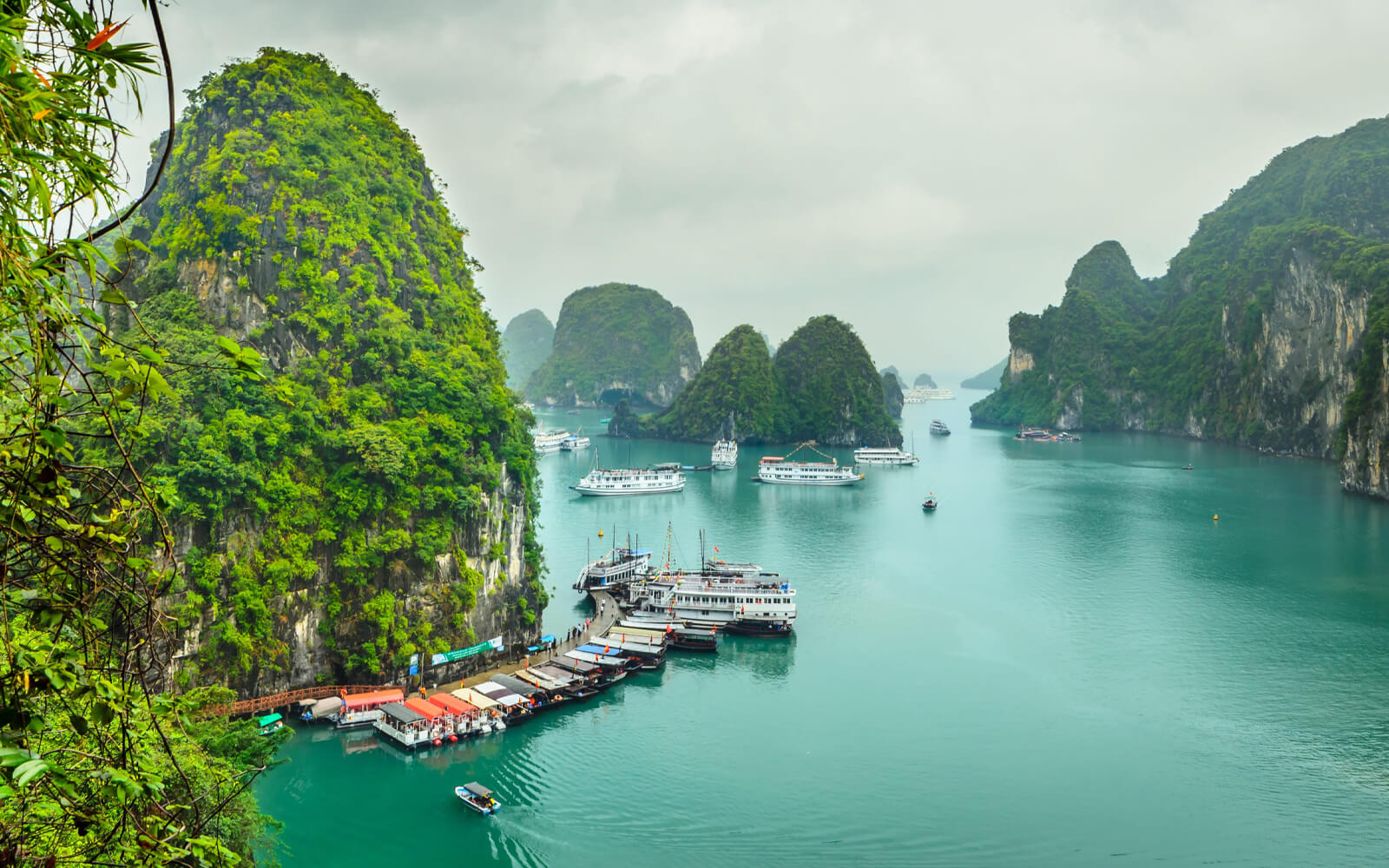Vietnamese Lion Dance: Immerse Yourself in Culture and Joy
The Vietnamese lion dance is a vibrant cultural tradition performed during festivals, weddings, and special events to bring good luck and ward off evil spirits. With its colorful costumes, lively music, and symbolic movements, the lion dance holds a special place in Vietnamese celebrations. In this blog from Asia Legend Travel, we’ll explore its history, performance elements, and where you can experience the Vietnamese lion dance in all its glory.
What is the Vietnamese Lion Dance?
The Vietnamese lion dance, also known as “Múa Lân” in Vietnamese (the Vietnamese lion dance name), is a traditional performance deeply rooted in Vietnamese culture. It is most commonly seen during the Lunar New Year (Tết), major festivals like Mid-Autumn festival, and other special events such as grand openings and Vietnamese weddings to symbolize good fortune, happiness, and the removal of negative energy. The lion is a revered figure in Asian cultures, representing strength, prosperity, and protection.
The History of Vietnamese Lion Dance
The Vietnamese lion dance history dates back centuries, influenced by the Chinese lion dance but adapted to reflect Vietnam’s unique cultural landscape. Originally, the dance was performed to celebrate important religious and social events, particularly in temples and during New Year festivities. Over time, it became an integral part of Vietnam's national identity, blending folklore with modern celebration.

The Vietnamese lion dance originated in China
Today, the Vietnamese lion dance is an iconic symbol during celebrations, with performers donning intricately designed lion costumes and delivering high-energy performances. This unique folk art form has evolved into a cherished tradition, preserved and practiced across various regions of Vietnam.
Symbols
The lion in the Vietnamese lion dance holds deep symbolic meaning. In Vietnamese culture, the lion represents strength, courage, and wisdom. The dance is often performed to scare away evil spirits, especially at the start of the new year. The lion's facial features - including its eyes, teeth, and whiskers - along with its movements, are designed to embody protection, luck, and good health. Each move in the Vietnamese lion dance performance is choreographed with intent, representing various attributes of the lion, such as its agility, power, and grace.
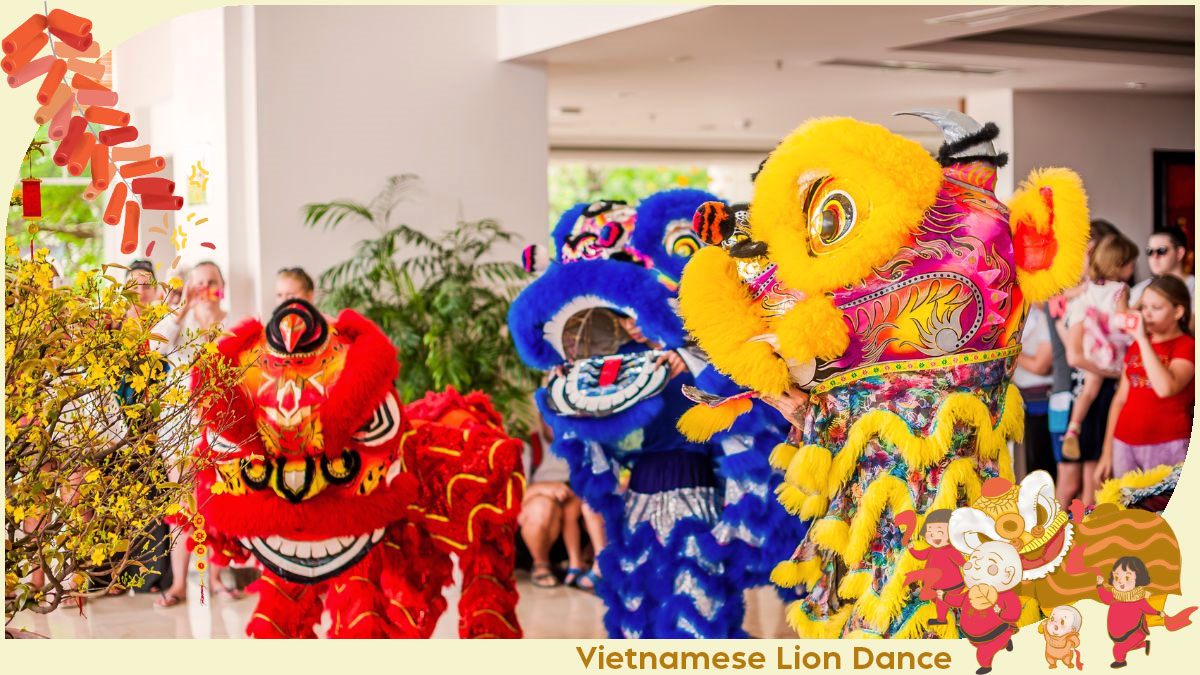
The lion in Vietnamese lion dance has special meaning in the culture
The Performance of Vietnamese Lion Dance
The Vietnamese lion dance performance is a captivating display of skill, coordination, and cultural artistry. Typically performed by a troupe of dancers and musicians, the performance blends rhythmic movements with powerful drum beats to bring the lion to life.
Key Elements of a Lion Dance Performance
The performance requires two dancers to control the lion costume. One person manages the head, while the second person operates the back legs and tail, together creating a fluid, lifelike representation of the lion. The dance is incredibly dynamic, featuring leaps, spins, and crouches that showcase the lion's playful yet fierce nature. This demanding routine requires performers to be in top physical condition, possessing strength, agility, and stamina to sustain the intense, lengthy performance.

Unique features of Vietnamese lion dance
A unique feature of Vietnamese lion dance performances is the character of Mr. Earth (or "ông Địa" in Vietnamese). Found only in Vietnam, Mr. Earth is an essential part of the performance, representing the spirit of good luck and the home. During the dance, Mr. Earth carries a paper fan, waving it at the audience. This action is believed to ward off evil forces and spread harmony and love among all present. According to Vietnamese tradition, Mr. Earth has a sweet tooth, so people often make offerings to him in the form of candies.
Meanwhile, the lion interacts with the audience, accepting gifts such as oranges or lettuce. This interaction is seen as a way to invite prosperity and wealth to those who present offerings to the lion.
Role of Music and Drums in Performance
A key component of the Vietnamese lion dance performance is the powerful, rhythmic music. Drums, cymbals, and gongs accompany the dance, setting the pace and energy for the lion’s movements. The drum is considered the heartbeat of the performance, with each beat corresponding to a jump, bow, or shuffle of the lion. The thunderous sound of the drums not only drives the lion’s steps but also is believed to scare away evil spirits, adding a spiritual dimension to the performance.
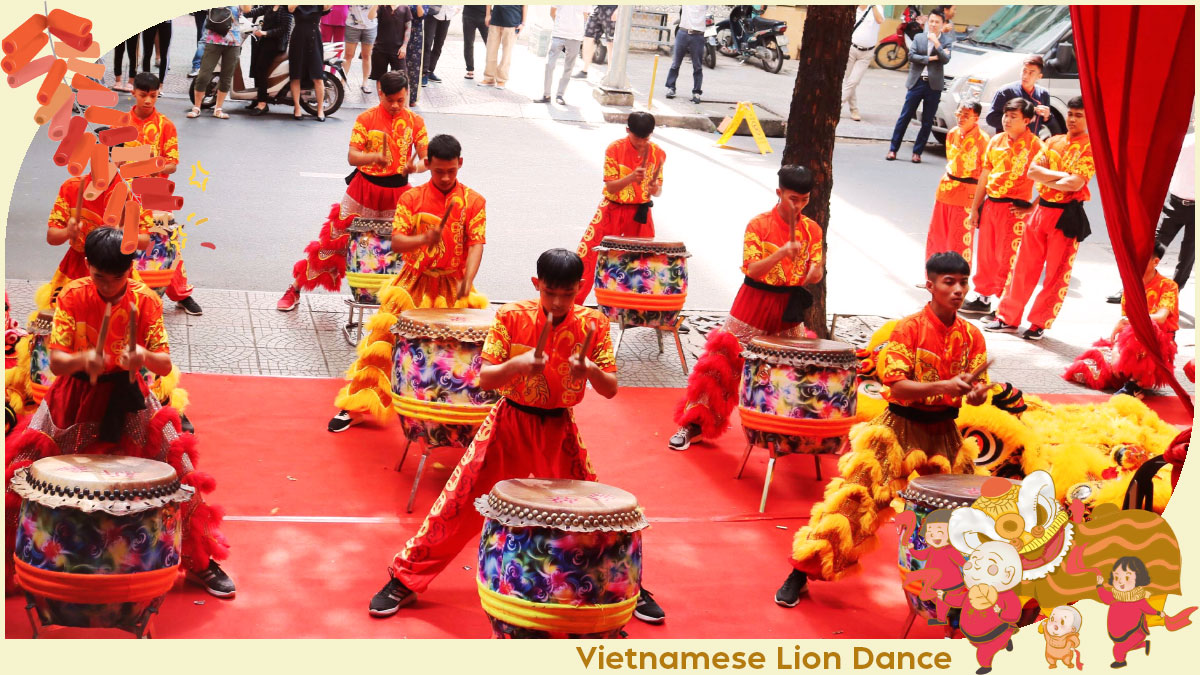
The Role of Music and Drums in Vietnamese Lion Dance
Vietnamese Lion Dance Costumes
The Vietnamese lion dance costume is one of the most visually striking aspects of the performance. Made from colorful fabrics, decorated with intricate embroidery, and often featuring large, expressive eyes and moving mouths, these costumes are designed to capture attention and convey the lion’s mythical qualities.
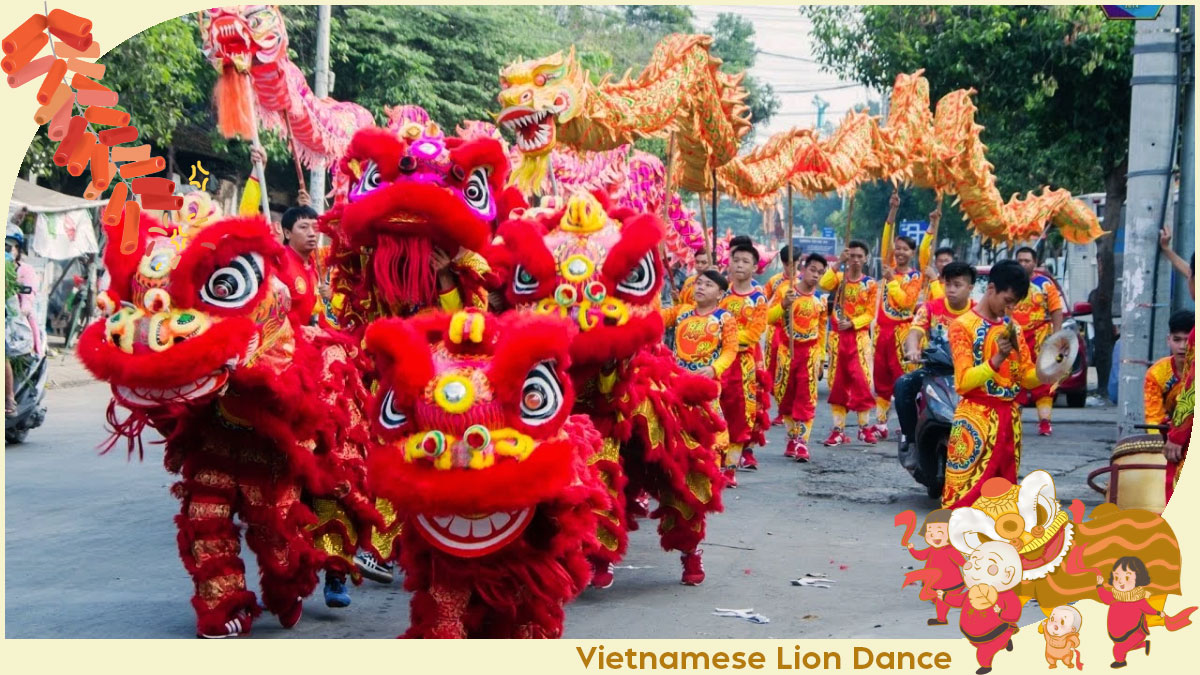
Outfits in Vietnamese Lion Dance
Costumes come in various colors, each with its symbolic meaning - red for good luck, gold for prosperity, and green for growth. The lion’s face is typically adorned with features like fierce teeth, bright eyes, and fur-covered details that highlight the strength and grandeur of the lion.
Different Styles of Vietnamese Lion Dance
Although the Vietnamese lion dance originated from its Chinese counterpart, it has evolved over time into various regional styles. Let's explore the different types of Vietnamese lion dance and their unique characteristics.
Lion and Cat Dance in Lang Son province
This traditional custom of the Tay and Nung ethnic groups in Lang Son province is rich with cultural significance. The lion and cat dance not only demonstrates the martial prowess of these Vietnamese mountain communities but also represents good fortune and joy in life.
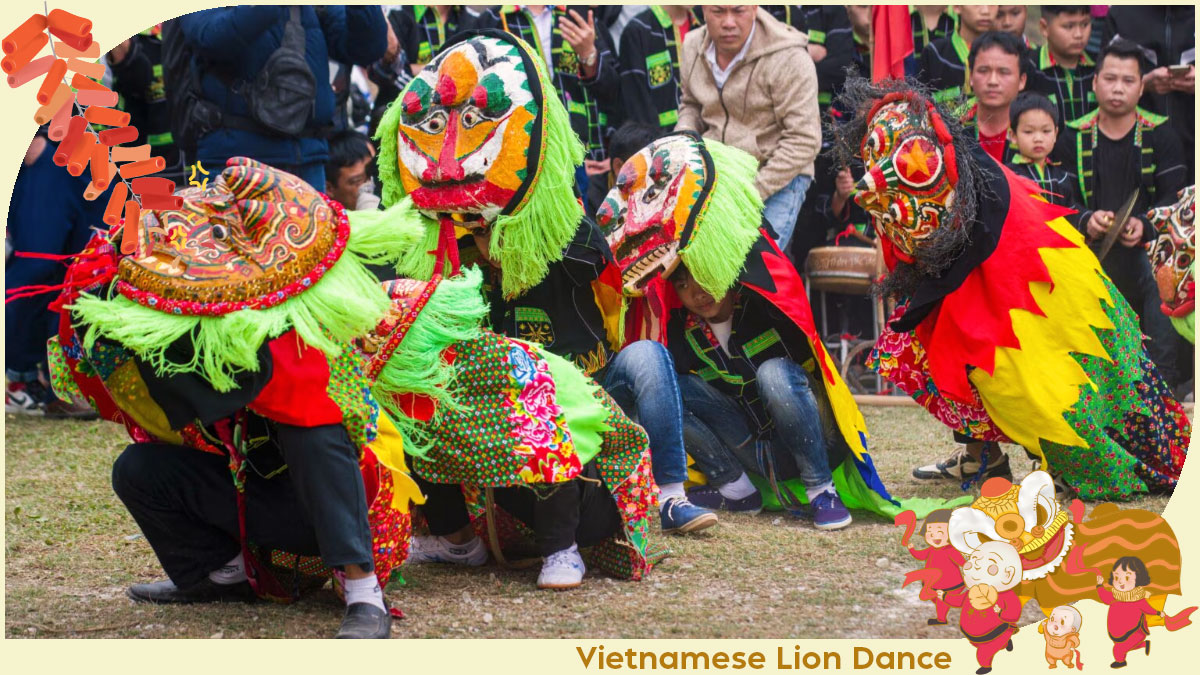
Vietnamese Lion Dance Lion and Cat Dance in Lang Son province
In contrast to other lion dances, this performance involves a team of 8 to 16 people, with each member controlling a head that resembles a lion but with a cat's face. The costumes, crafted from locally sourced materials, feature intricate patterns unique to these ethnic groups and incorporate a vibrant color palette of red, black, yellow, and dark blue. This isn't just a dance; it's an experience that touches your soul, leaving you with a sense of wonder and a deep appreciation for the rich cultural tapestry of Vietnam's ethnic minorities.
Heavenly Dog Dance (Tengu Dance) in Hoi An
The Heavenly Dog Dance, or Tengu Dance, is a cherished tradition unique to Hoi An that truly comes alive during the Mid-Autumn Festival. This once-simple folk dance has evolved into a breathtaking spectacle, seamlessly blending traditional martial arts to create a mesmerizing display. The performance captures the spiritual essence of this mythical Tengu, enchanting audiences with its grace and power.

Vietnamese Lion Dance Heavenly Dog Dance in Hoi An
As the fifteenth day of the seventh lunar month approaches, the air fills with the rhythmic beats of practice drums echoing through Hoi An's winding streets and quaint villages each night. These pulsating rhythms serve as both a joyful reminder and an enthusiastic call, urging locals and visitors alike to ready themselves for the vibrant Mid-Autumn Festival celebrations that lie ahead.
Lion Dance at Cholon Market, Ho Chi Minh City
Cholon Market, home to a significant Mandarin-speaking Chinese community, showcases a unique blend of Vietnamese and Chinese lion dance traditions that will leave you spellbound. The performances here are characterized by powerful and majestic movements, reminiscent of Chinese styles. A standout feature is the dancers' ability to perform atop tall pillars – a breathtaking display of agility and courage that adds an extra layer of excitement to this cultural extravaganza.
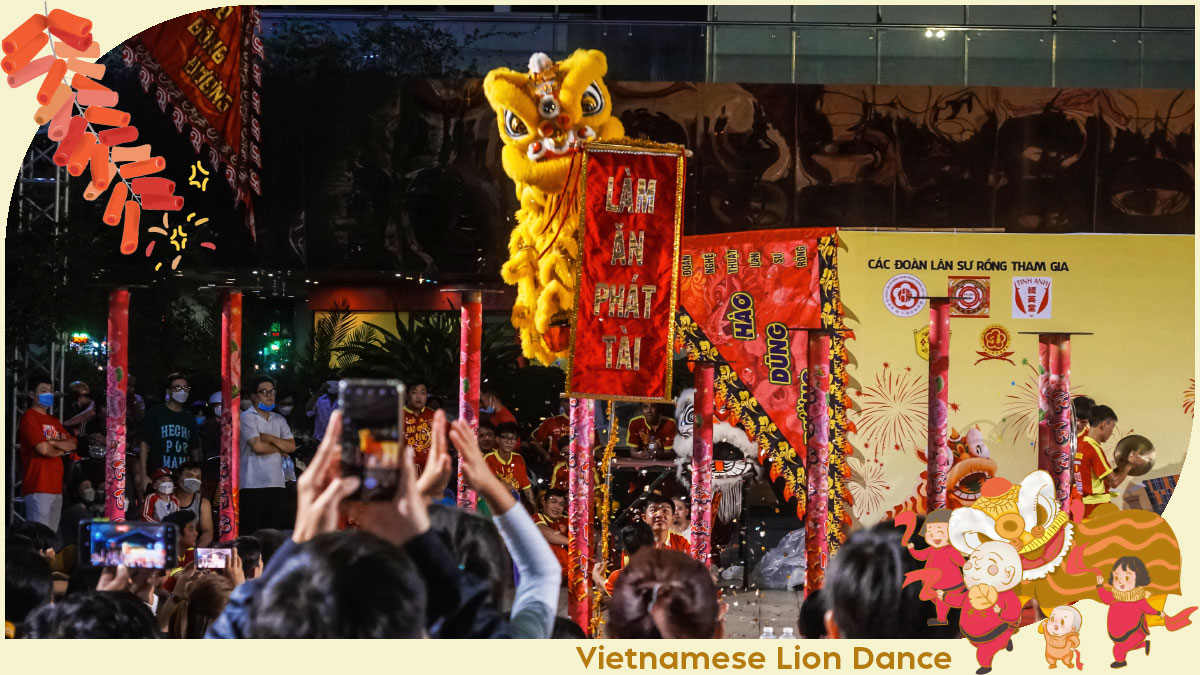
Vietnamese Lion Dance Lion Dance at Cholon Market
Where to Experience the Lion Dance in Vietnam
If you’re visiting Vietnam, you’ll want to experience the Vietnamese lion dance performance in person. This cultural spectacle can be found in various cities, especially during festival times.
Locations
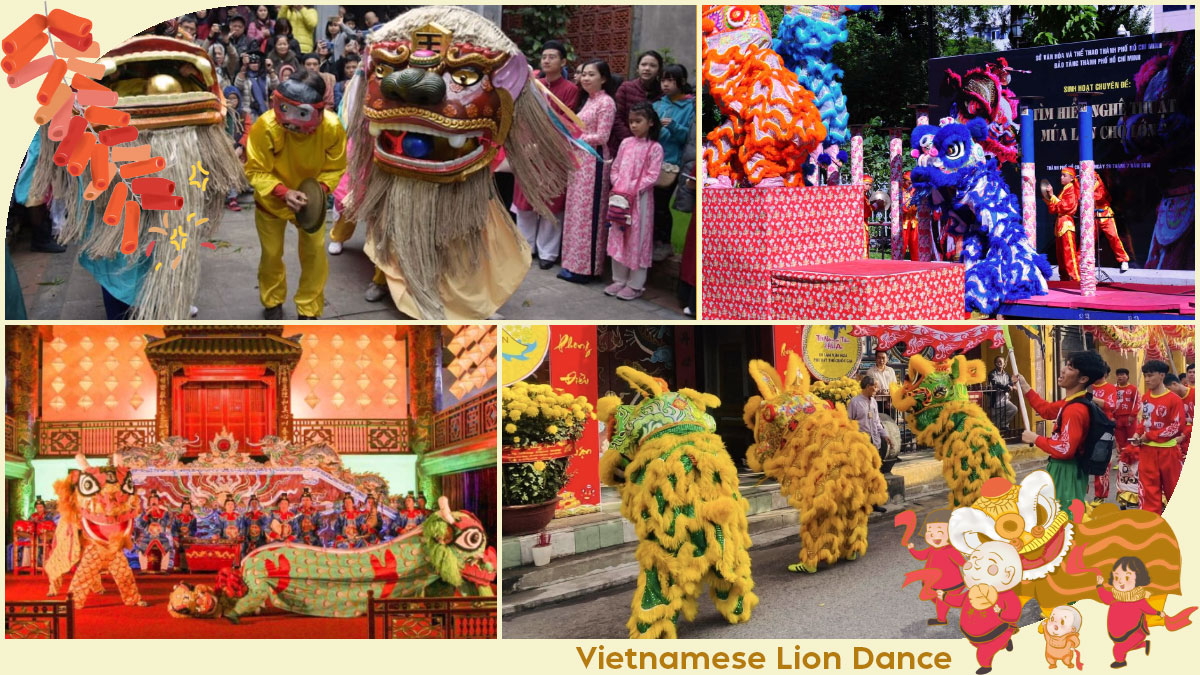
Where to Experience the Vietnamese Lion Dance
- Ho Chi Minh City: During the Lunar New Year, lion dances are performed across the city, especially in front of homes, businesses, and temples. The excitement is palpable as troupes of lions roam the streets, performing for good fortune.
- Hanoi: In Hanoi, the Old Quarter is a great spot to witness lion dances during festivals. As you wander through the narrow streets, you'll be swept up in the excitement of thundering drums and the mesmerizing sight of colorful lions weaving past charming souvenir shops. It's a truly enchanting spectacle that transports you to a world of wonder and cultural richness.
- Hoi An: Known for its lantern festivals, Hoi An offers a more serene setting for the lion dance, adding a mystical quality to the performance. If you're planning a Danang Hoian 4 day tour, you'll have ample opportunity to experience this enchanting tradition in the ancient town's atmospheric streets.
- Hue: Experience a royal twist on the lion dance at the Duyet Thi Duong Theatre, located within the grounds of Hue's imperial palace. This unique court version typically features pairs of lions - yellow for male and green for female. The theatre itself is a must-see, with its stunning architecture and intricate designs that perfectly capture the essence of the Nguyen dynasty's royal style. It's a fantastic opportunity to immerse yourself in Vietnamese cultural history while enjoying a spectacular performance.
Events

Events to Enjoy Vietnamese Lion Dance
- Tet Vietnamese New Year: The best time to see the Vietnamese lion dance is during Tết. During this period, lion dances are performed all across Vietnam to welcome the new year. If you're planning a Vietnam 14 day tour, scheduling it around Tết will give you the perfect opportunity to experience this vibrant tradition firsthand.
- Mid-Autumn Festival: Another excellent time to catch a performance is during the Mid-Autumn Festival, where children carry lanterns and the lion dances through the streets.
- Business openings and Groundbreaking ceremony: Lion dance performances are often commissioned for new business launches or groundbreaking ceremonies. These vibrant displays are believed to bring good fortune, prosperity, and a promising future to the new venture.
- Lion dance Vietnamese wedding: The Vietnamese lion dance is also performed at weddings, bringing blessings of happiness and prosperity to the newlyweds.
Why You Should Experience the Lion Dance in Vietnam
Experiencing a Vietnamese lion dance is a must-do for any traveler to Vietnam. Here's why it's worth seeking out:

Why Vietnamese Lion Dance is worth a try for travelers
Cultural Immersion
Watching the a Vietnamese lion dance is like stepping into a living, breathing piece of Vietnamese culture. It's not just a show; it's a window into centuries-old traditions and beliefs that continue to shape modern Vietnam. As you watch the dancers bring the lion to life, you'll feel the pulse of Vietnamese heritage beating through every movement.
A Photographer's Dream
If you're a fan of photography, you're in for a treat. The Vietnamese lion dance costume is a riot of colors, and the high-energy performance offers endless opportunities for capturing stunning shots. Whether you're wielding a professional camera or just your smartphone, you'll walk away with images that truly capture the vibrancy and spirit of Vietnam.
Travel Tips for Travelers to Experience Vietnamese Lion Dance
Here are some insider tips to help you fully enjoy the Vietnamese lion dance experience:
- Plan Around Festivals: If you want to witness the Vietnamese lion dance, it’s best to plan your trip around major festivals like Tết or the Mid-Autumn Festival.
- Arrive Early: These performances can draw large crowds, especially in popular areas, so arriving early will help you secure a good viewing spot.
- Be Respectful: Many performances take place during religious or cultural ceremonies, so be mindful of local customs and traditions while observing the lion dance.
- Tipping is Appreciated: While not required, offering a tip to lion dance performers is a thoughtful gesture. It's seen as a way to share good fortune and happiness, especially during special events.
The Vietnamese lion dance is a thrilling and vibrant part of Vietnam’s cultural heritage. Whether you witness it during Tết, a Vietnamese wedding, or a local festival, the lion dance showcases the rich history, artistry, and spirit of the Vietnamese people. From its symbolic movements to the stunning lion dance costumes, every aspect of this performance brings joy and excitement to all who watch. For an authentic experience of Vietnam’s traditions, consider including a lion dance performance in your Vietnam tour. Asia Legend Travel can guide you to the best places and events where you can immerse yourself in the beauty of the Vietnamese lion dance firsthand.

